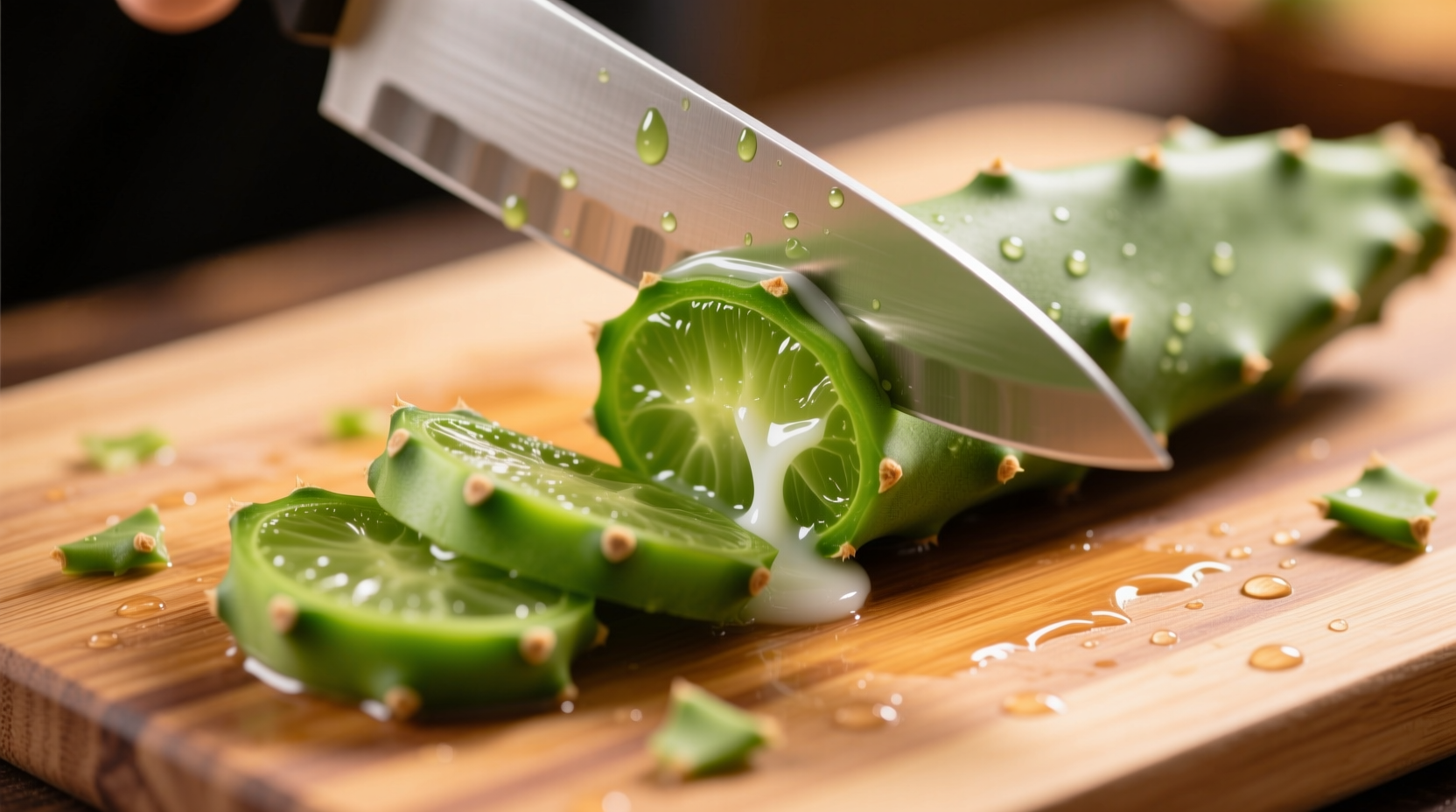| Cactus Type | Edible Parts | Preparation Required | Common Culinary Use |
|---|---|---|---|
| Prickly Pear (Opuntia) | Pads (nopales), fruit (tunas) | Spine removal, cleaning | Sautéed dishes, salads, grilled |
| Dragon Fruit Cactus | Fruit only | Peeling | Raw consumption, smoothies |
| San Pedro Cactus | None for culinary use | N/A | Not recommended for cooking |
| Barrel Cactus | Flowers, fruit (seasonal) | Specialized preparation | Traditional indigenous use only |
Discover the vibrant world of cooking with nopales, the edible pads of the prickly pear cactus. As a Latin American cuisine specialist who's documented traditional preparation methods from Oaxaca to Sonora, I've seen how properly cooked cactus transforms from intimidating plant to delicious, nutrient-rich ingredient. This comprehensive guide reveals exactly how to select, prepare, and cook nopales like a Mexican abuelita, complete with professional techniques that eliminate sliminess and maximize flavor.
Selecting the Perfect Nopales
When shopping for nopales, look for firm, bright green pads about 4-6 inches long. According to University of Arizona Cooperative Extension research, younger pads contain fewer spines and less mucilage (the slimy substance some find off-putting). Avoid yellowing or wrinkled pads, which indicate age. If harvesting your own, wear thick gloves and use tongs to handle the pads safely. The USDA Agricultural Research Service confirms that Opuntia ficus-indica is the most commonly consumed variety worldwide.
Step-by-Step Preparation Process
Proper preparation is crucial for safe cactus cooking. Follow this timeline-tested method used in traditional Mexican kitchens:
- Secure the pad: Place on cutting board and stabilize with kitchen tongs
- Remove spines: Using a vegetable peeler, scrape from top to bottom in downward motions
- Clean thoroughly: Rinse under cold water while scrubbing with a vegetable brush
- Check for glochids: Hold against light to spot tiny hair-like spines; remove with tweezers if needed
- Slice: Cut into 1/4-inch strips or dice according to recipe requirements
For best results, soak sliced nopales in vinegar water (1 tablespoon vinegar per cup of water) for 15 minutes to reduce sliminess. This technique, documented in Texas A&M AgriLife Extension publications, helps break down mucilage while preserving texture.

Master Cooking Techniques
Professional chefs use these four methods to achieve perfect nopales every time:
1. Dry Roasting (Traditional Method)
Place whole pads directly on gas stove burner over medium flame for 2-3 minutes per side until charred. This technique, recommended by Mexican culinary experts at the National Institute of Anthropology and History, enhances flavor while reducing moisture content. After roasting, proceed with spine removal and slicing.
2. Sautéing (Most Versatile)
Heat 1 tablespoon olive oil in cast-iron skillet over medium-high heat. Add prepared nopales with 1/4 cup diced white onion. Cook for 7-10 minutes, stirring occasionally, until tender but still slightly crisp. Add minced garlic during the last 2 minutes for enhanced flavor. This method yields the classic texture found in authentic Mexican restaurants.
3. Grilling (Best for Summer)
Toss prepared nopales with olive oil, salt, and pepper. Grill over medium heat for 3-4 minutes per side until tender with attractive grill marks. The University of California Cooperative Extension notes that grilling creates delicious caramelization while reducing water content.
4. Boiling (Quick Preparation)
Bring 4 cups water to boil with 1 tablespoon vinegar. Add prepared nopales and cook for 8-10 minutes until tender. Drain thoroughly and rinse with cold water. This method works well when preparing larger quantities.
Three Authentic Nopales Recipes
Nopales con Huevo (Cactus with Eggs)
Sauté 1 cup prepared nopales with 1/4 cup diced onion until tender. Push to side of pan, scramble 2 eggs in same pan, then combine. Season with salt and fresh cilantro. Serve with warm corn tortillas.
Nopales Salad
Combine 1 cup cooked nopales with 1/2 cup diced tomato, 1/4 cup red onion, 2 tablespoons fresh lime juice, and 1 tablespoon olive oil. Toss gently and serve chilled. This refreshing salad appears in traditional cookbooks from the Instituto Nacional de Antropología e Historia.
Grilled Nopales Tacos
Marinate grilled nopales strips in 2 tablespoons orange juice and 1 teaspoon cumin for 15 minutes. Serve on warm corn tortillas with crumbled queso fresco and salsa verde.
Storage and Safety Considerations
Raw nopales keep for 1 week in the refrigerator when stored in a perforated plastic bag. Cooked nopales last 3-4 days in airtight containers. Never consume cactus pads that appear slimy, discolored, or have an off odor. The FDA advises that improperly prepared cactus can cause mouth and throat irritation from residual spines. Stick to Opuntia varieties for culinary use—other cacti may contain harmful compounds.
Nutritional Powerhouse
Nopales offer impressive health benefits backed by USDA National Nutrient Database analysis. One cup (150g) of cooked nopales provides:
- 36 calories
- 3g dietary fiber (12% of daily value)
- 14% of daily vitamin C needs
- Significant calcium and magnesium
- Natural antioxidants
Research published in the Journal of Agricultural and Food Chemistry confirms nopales contain compounds that help regulate blood sugar levels, making them valuable for diabetes management.











 浙公网安备
33010002000092号
浙公网安备
33010002000092号 浙B2-20120091-4
浙B2-20120091-4